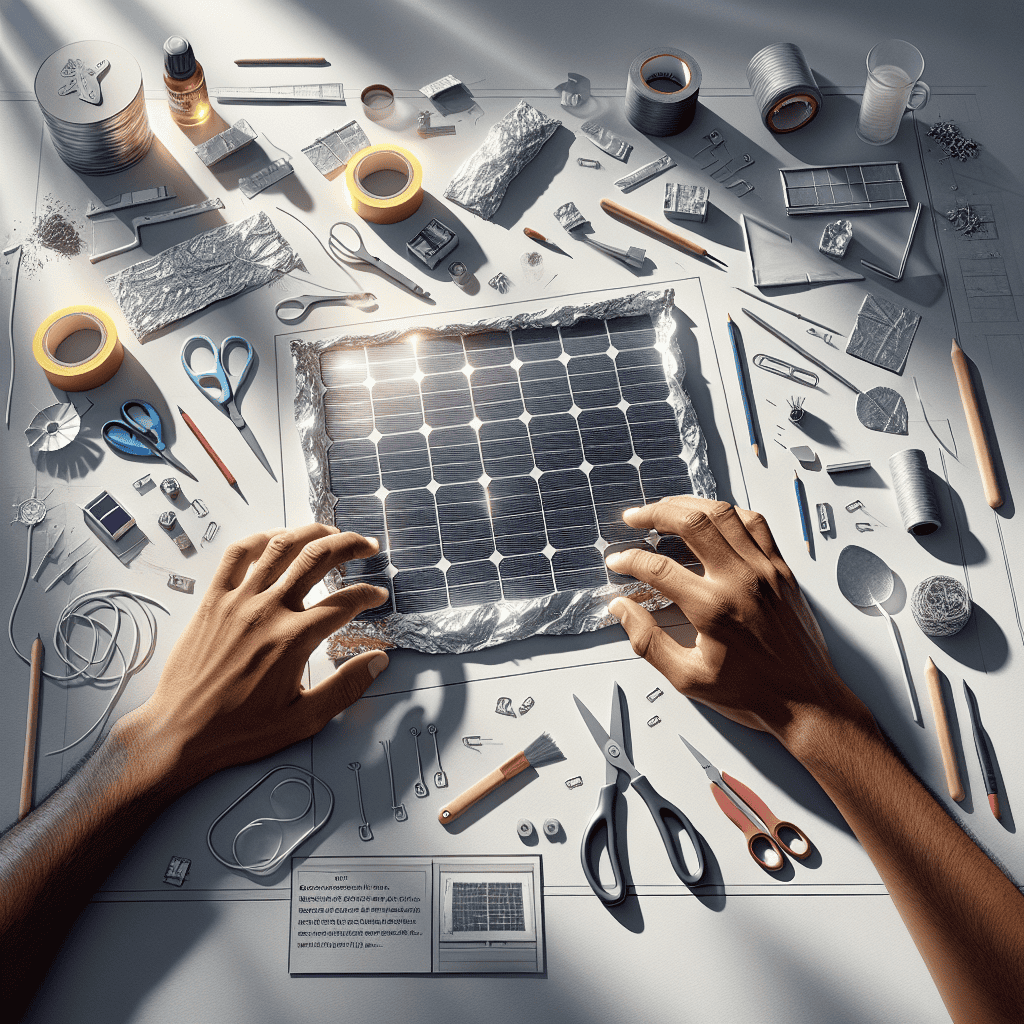Are you interested in harnessing the power of the sun with a DIY project? Making a solar panel with aluminum foil is a fun and educational activity that can help you understand solar energy principles. This simple project is perfect for those looking to experiment with sustainable energy solutions without a hefty investment. Let’s dive into creating a small-scale solar panel using household items.

Materials Needed
To build your solar panel, gather the following supplies:
- Aluminum foil: Acts as a reflective surface.
- Copper wire: Conducts electricity.
- Black electrical tape: Secures and insulates components.
- PVC sheets: Creates a sturdy base.
- Glue: Bonds materials together.
- Multimeter: Measures voltage and current.
- Low-power solar cell: Optional, for comparison.
Step-by-Step Instructions
Step 1: Prepare the Base
Start by cutting a piece of PVC sheet into your desired panel size. Ensure it’s large enough to hold your foil and wiring. The sheet will provide structural support for your homemade solar panel.
Step 2: Reflective Layer
Cover a large section of the PVC board with aluminum foil. Secure it using glue or tape to ensure a smooth, flat surface. This reflective layer helps to capture sunlight and focus it toward the solar cell.
Step 3: Wiring Your Panel
Peel some copper wire and lay it over one side of your foil. Tape down the wire using black electrical tape, ensuring good contact with the foil. Leave some wire hanging off the edge to connect to a multimeter or a load.
Step 4: Assembly
Cover the foil with another layer of PVC to protect the wiring. Make sure your panel is still exposed to sunlight by leaving a small section uncovered at the top. Secure all components using glue or tape.
Step 5: Testing Your Solar Panel
Use the multimeter to measure the voltage and current output of your DIY solar panel. Place your panel under direct sunlight or a bright lamp for optimal results. Record the readings and compare them to those of a small purchased solar cell if available.
Also Read: How Many Volts Does a Solar Panel Produce?
Tips for Optimization
To improve your solar panel’s efficiency, consider these additional tips:
- Optimize Sunlight Exposure: Place your panel where it can absorb the most sunlight during the day.
- Experiment with Angles: Adjust the tilt to track the sun’s movement.
- Keep It Clean: Regularly wipe the surface to remove dust and debris.
Understanding Solar Energy
Creating a solar panel with aluminum foil introduces the basics of solar energy conversion. The reflective foil redirects sunlight onto the core of the panel, which then converts light into electrical energy. Although a homemade panel won’t power major appliances, it’s an excellent starting point for learning how solar technology can be adapted and improved.
Conclusion
Building a solar panel with aluminum foil is a straightforward project that illuminates the basics of renewable energy. This DIY approach promotes practical understanding while encouraging further exploration into sustainable practices. With a few tools and materials, you can craft a solar panel and witness the fascinating process of turning sunlight into electricity.